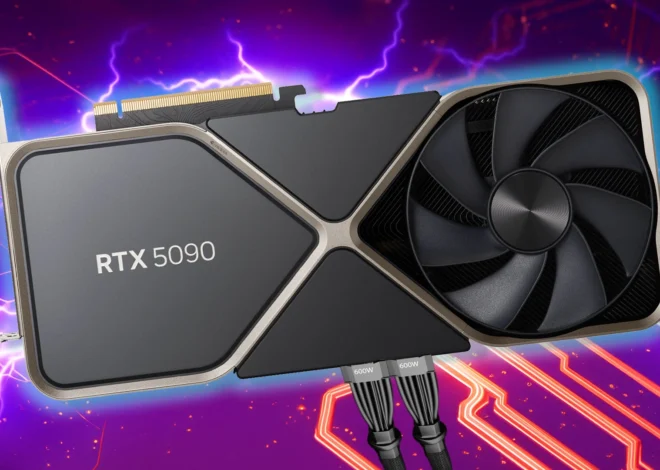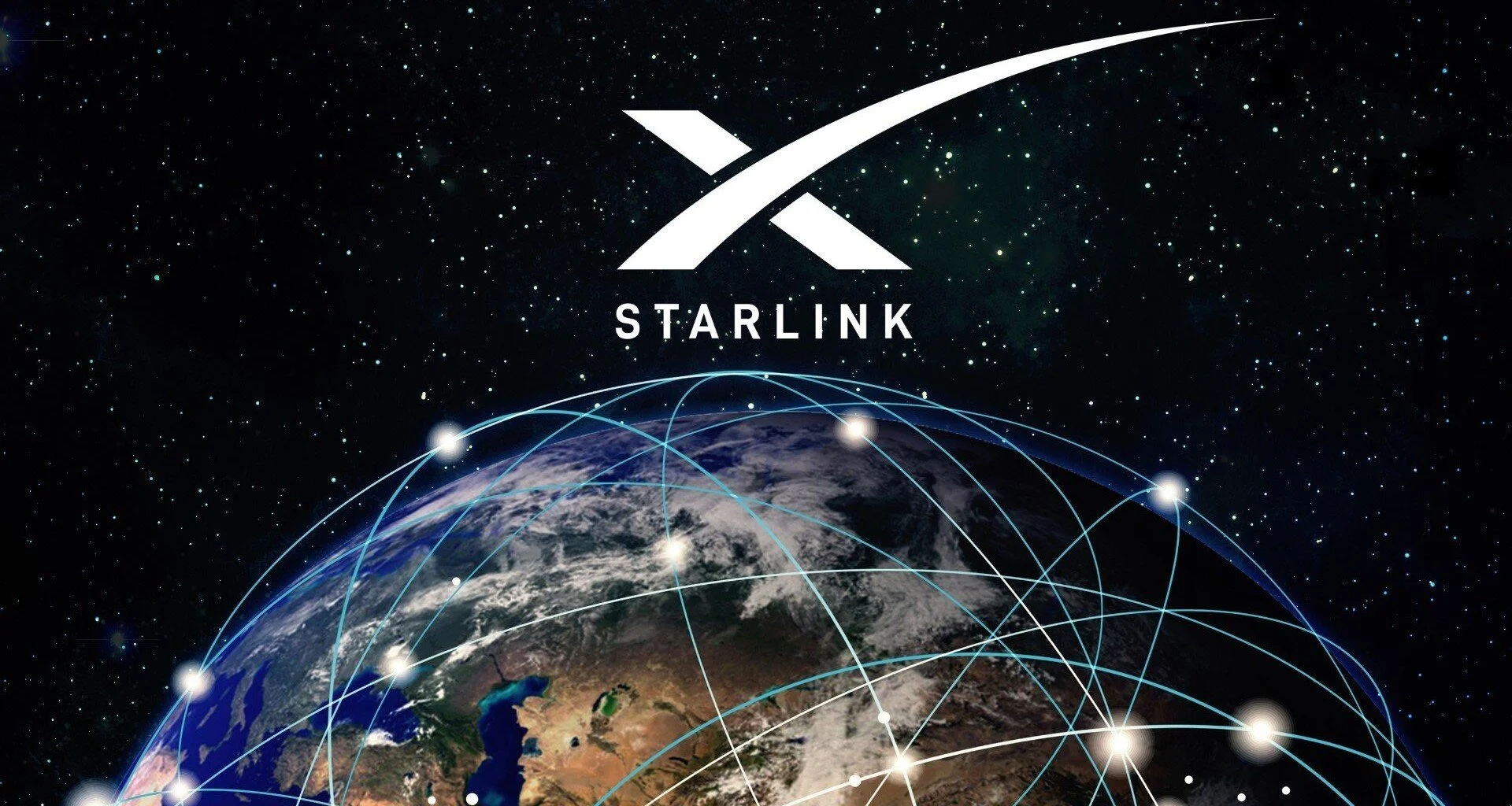
Starlink Pricing and Speeds: Everything You Need to Know
Starlink, SpaceX’s satellite internet service, has made waves in the tech world. It promises fast speeds and wide coverage, even in remote areas. But how does it stack up in terms of performance and cost?
Starlink offers download speeds of 50 to 500 Mbps, depending on the plan you choose. The Standard plan provides 24-220 Mbps for $120 per month. For those who need more power, Business plans are available with speeds up to 500 Mbps, but at a higher price point of $500 monthly.
Compared to other satellite internet providers, Starlink often comes out on top for speed and latency. Recent tests show that Starlink’s performance has improved over the past year, with upload speeds increasing by 23% and latency dropping by 24%. This boost in quality comes without a price hike, making Starlink an increasingly attractive option for those seeking reliable internet in hard-to-reach locations.
Starlink: A Comprehensive Guide to Speeds and Pricing
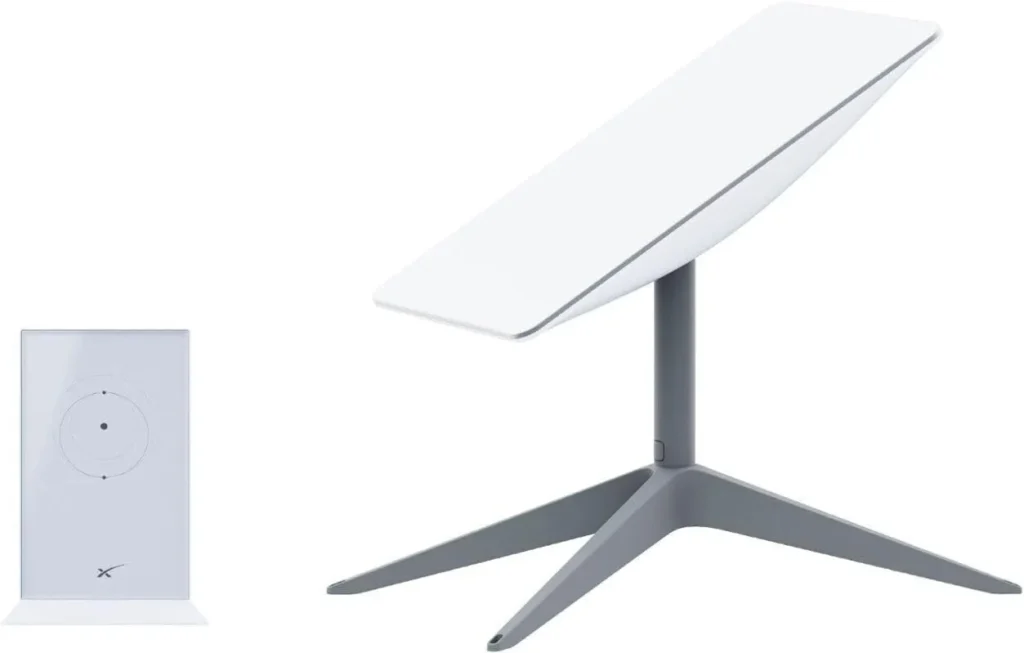
Typical Speeds
Starlink’s performance typically delivers download speeds between 25 and 220 Mbps. Most users enjoy speeds above 100 Mbps, making activities like streaming, gaming, and video calls a breeze. Upload speeds are usually between 5 and 20 Mbps, suitable for most online tasks. Latency, or the time it takes for data to travel, ranges from 25 to 60 ms on land. However, in remote locations like oceans or islands, latency can exceed 100 ms.
Factors Affecting Speed
Remember, real-world speeds can vary. Network congestion, obstructions (like trees or buildings), and weather conditions can all impact your experience. It’s best to check Starlink’s availability map for estimated speeds in your specific location.
Starlink Plans and Pricing
Starlink offers various plans catering to different needs and budgets. Here’s a quick overview:
| Plan Name | Monthly Cost | Hardware Cost | Best For |
|---|---|---|---|
| Residential | $120/month | $599 (one-time) | Typical household internet use. |
| Roam | $150/month | $599 (one-time) | RVs, boats, and on-the-go use. |
| Business | $500/month | $2,500 (one-time) | Businesses requiring high-priority data and enhanced support. |
Starlink Speeds
| Metric | Typical Speeds |
|---|---|
| Download | 25 – 220 Mbps (majority over 100 Mbps) |
| Upload | 5 – 20 Mbps |
| Latency (land) | 25 – 60 ms |
| Latency (remote areas) | 100+ ms |
Note: Actual speeds may vary based on factors such as network congestion, obstructions, and weather conditions.
Additional Considerations
Be aware of additional costs like shipping & handling and applicable taxes. Starlink doesn’t lock you into contracts, giving you the flexibility to cancel anytime. They also offer a 30-day trial, allowing you to test the service and return the equipment for a full refund if unsatisfied.
Remember, speeds and pricing can change. Always consult the official Starlink website for the latest information. Consider your individual needs and location when choosing a plan.
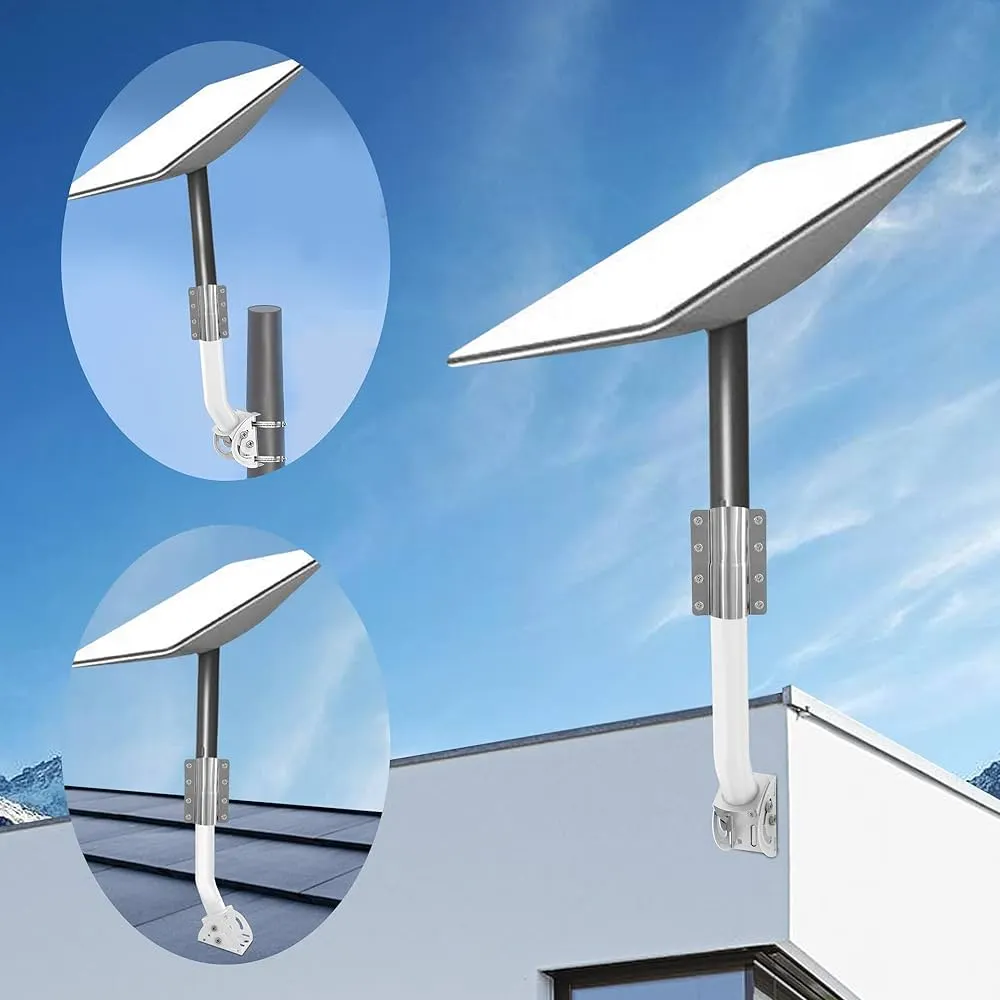
Key Takeaways
- Starlink offers speeds from 50 to 500 Mbps across various plans
- Performance has improved with faster uploads and lower latency
- Pricing ranges from $120 to $500 per month depending on the plan
Starlink Service Overview
Starlink provides satellite internet with fast speeds and wide coverage. Its technology and service plans aim to bring reliable internet to areas previously underserved.
Technological Advancements
Starlink uses a network of low Earth orbit satellites to deliver internet. This design reduces latency compared to traditional satellite internet. The satellites form a mesh network, improving connection stability.
SpaceX regularly launches new satellites to expand coverage. As of 2024, thousands of Starlink satellites orbit Earth. The growing constellation allows Starlink to serve more users globally.
The company also updates its ground equipment. New dishes have improved designs for easier setup and better performance in harsh weather.
Downloading and Uploading Capabilities
Starlink offers faster speeds than many traditional satellite or rural internet options. Download speeds typically range from 50 to 200 Mbps. Upload speeds are usually between 10 to 20 Mbps.
Actual speeds can vary based on location and network traffic. Some users report even higher speeds at times. The low latency of Starlink enables smooth video calls and online gaming.
Ookla speed tests show Starlink outperforms other satellite providers in speed and latency. This makes it suitable for streaming, work, and other high-bandwidth activities.
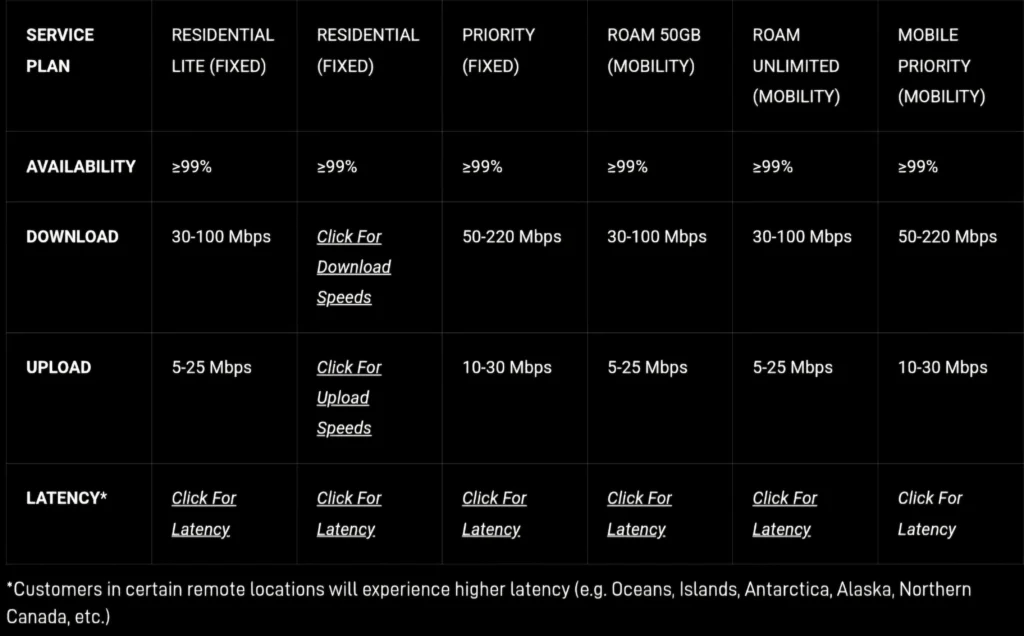
Service Plan Options
Starlink offers several plan types to fit different needs. The standard residential plan costs $120 per month. It includes unlimited data with no caps or throttling.
For those who travel, Starlink has a Roam plan. This allows users to connect on the go in many countries. There’s also a Boats plan for maritime use.
Business users can choose from three tiers of service. These offer faster speeds and priority support at higher price points. All plans require purchasing Starlink hardware upfront.
Pricing and Accessibility
Starlink offers various pricing plans and accessibility options to meet different needs. The service aims to provide internet access to areas with limited connectivity.
Comparative Market Analysis
Starlink’s Standard plan costs $120 per month. This price is higher than some traditional internet providers but may be competitive in areas with few options. The service offers speeds between 24-220 Mbps.
Compared to other satellite providers like HughesNet and Viasat, Starlink often provides faster speeds and lower latency. This can make it a better choice for online gaming and video calls.
There’s a one-time equipment fee of $599 for the Starlink kit. Shipping and handling costs an extra $50.
Coverage and Mobility Solutions
Starlink covers many parts of the world, including remote areas. This makes it useful for people who live or travel in places without good internet access.
The company offers Starlink Roam for people on the move. This service works well for RV owners, campers, and nomads. It lets users pause and resume service as needed.
Starlink also has plans for boats and ships. This helps bring internet to maritime areas that were hard to connect before.
Self-Installation and Maintenance
Setting up Starlink is designed to be simple. Users can often install the equipment themselves without needing a technician.
The Starlink app helps find the best spot to place the dish. It guides users through the setup process step-by-step.
If problems occur, users can often fix them through the app or by contacting customer support. This self-service approach can save time and money compared to traditional providers that require service calls.
Frequently Asked Questions
Starlink offers various internet plans with different speeds and pricing options. Let’s explore some common questions about costs, speeds, and availability.
What are the monthly costs for different Starlink internet plans?
Starlink has three main plans. The Standard plan costs $120 per month for speeds of 24-220 Mbps. The RV plan is priced similarly. The Business plan offers faster speeds but costs $500 per month.
Are there specific pricing and speed options for seniors choosing Starlink?
Starlink doesn’t currently offer senior-specific plans. All customers have access to the same pricing and speed options, regardless of age.
How do Starlink speeds and pricing vary by state, such as in California?
Starlink aims for consistent pricing across states. Speeds may vary based on user density and satellite coverage in each area. California users might see different speeds than less populated states.
How can I find out the expected Starlink speeds in my local area?
Check the Starlink website and enter your address. It will show estimated speeds for your location. Keep in mind these are projections and actual speeds may differ.
Does Starlink offer a speed test to measure internet performance?
Starlink doesn’t have its own speed test tool. Users can use third-party sites like Ookla Speedtest to check their connection speed and compare it to advertised rates.
Are there any data limits associated with Starlink plans?
Starlink plans don’t have set data caps. Users can use as much data as they need. But very high usage might lead to slower speeds during network congestion.
How much does Starlink internet cost?
Starlink offers a few different plans with varying costs. The Residential plan is $120 per month with a one-time hardware cost of $599. The Roam plan is $150 per month with the same hardware cost. There’s also a Business plan priced at $500 per month with a $2,500 hardware fee. Additional costs might include shipping, handling, and taxes.
What is the downside of Starlink?
Some downsides of Starlink include:
- High upfront cost for hardware
- Potential for slower speeds during network congestion or bad weather
- Requires a clear view of the sky for optimal performance
- Higher latency compared to terrestrial internet options like fiber
Is it worth getting Starlink internet?
Whether Starlink is worth it depends on your specific needs and circumstances. It’s a great option for people in rural or remote areas with limited or no access to traditional broadband. If you value fast speeds, unlimited data, and are willing to pay the premium price, Starlink could be a good choice. However, if you’re in an area with reliable and affordable terrestrial internet, it might not be the most cost-effective option.
How to get Starlink internet for free?
Currently, there’s no way to get Starlink internet for free. While there have been occasional promotions or discounts, the service generally requires a monthly subscription and a one-time hardware purchase.
Does Starlink give you unlimited internet?
Yes, all Starlink plans come with unlimited data, so you don’t have to worry about data caps or overage fees.
Is Starlink faster than fiber?
Generally, fiber internet offers faster speeds and lower latency than Starlink. However, Starlink can be a viable alternative in areas where fiber is unavailable or too expensive to install. Starlink’s speeds are also constantly improving, so the gap between the two might narrow in the future.

